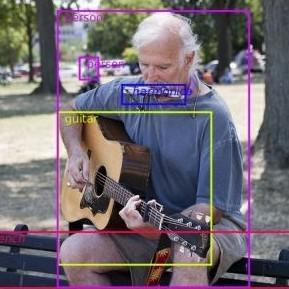ViLLA: Fine-Grained Vision-Language Representation Learning from Real-World Data
Vision-language models (VLMs), such as CLIP and ALIGN, are generally trained on datasets consisting of image-caption pairs obtained from the web. However, real-world multimodal datasets, such as healthcare data, are significantly more complex: each image (e.g. X-ray) is often paired with text (e.g. physician report) that describes many distinct attributes occurring in fine-grained regions of the image. We refer to these samples as exhibiting high pairwise complexity, since each image-text pair can be decomposed into a large number of region-attribute pairings. The extent to which VLMs can capture fine-grained relationships between image regions and textual attributes when trained on such data has not been previously evaluated. The first key contribution of this work is to demonstrate through systematic evaluations that as the pairwise complexity of the training dataset increases, standard VLMs struggle to learn region-attribute relationships, exhibiting performance degradations of up to 37% on retrieval tasks. In order to address this issue, we introduce ViLLA as our second key contribution. ViLLA, which is trained to capture fine-grained region-attribute relationships from complex datasets, involves two components: (a) a lightweight, self-supervised mapping model to decompose image-text samples into region-attribute pairs, and (b) a contrastive VLM to learn representations from generated region-attribute pairs. We demonstrate with experiments across four domains (synthetic, product, medical, and natural images) that ViLLA outperforms comparable VLMs on fine-grained reasoning tasks, such as zero-shot object detection (up to 3.6 AP50 points on COCO and 0.6 mAP points on LVIS) and retrieval (up to 14.2 R-Precision points).
PDF Abstract ICCV 2023 PDF ICCV 2023 Abstract





 MS COCO
MS COCO
 CheXpert
CheXpert
 LVIS
LVIS
 DeepFashion
DeepFashion